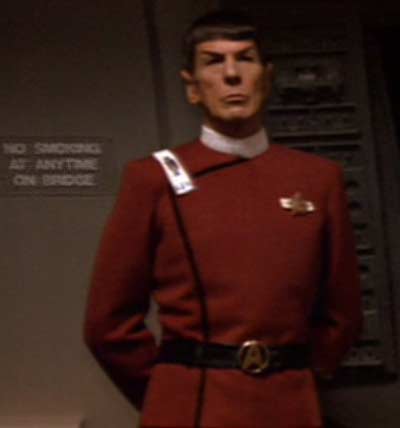
Posted on 02/19/2006 12:10:25 PM PST by KevinDavis
ST. LOUIS - An astronomer involved in a NASA mission to look for Earthlike planets beyond our solar system has winnowed through thousands of stars to come up with a top-10 list that includes some of the favorite haunts for science-fiction aliens.
Actually, the lineup from Margaret Turnbull at the Carnegie Institute of Washington is broken down into two top-five lists: one for the radio-based search for extraterrestrial intelligence, or SETI, and the other for the NASA mission, known as the Terrestrial Planet Finder.
The SETI stars will be on the list of targets for the privately funded Allen Telescope Array in California, which is due to begin limited operation with 42 linked radio dishes this spring. But the top prospects for the Terrestrial Planet Finder are currently in limbo, because NASA has put the mission on indefinite hold.
(Excerpt) Read more at msnbc.msn.com ...

* Beta Canum Venaticorum, Turnbull's top prospect. It's a sunlike star about 26 light-years away in the northern constellation Canes Venatici. Astronomers have been looking for planets around the star but have found none to date.
* HD 10307, another sunlike star about 42 light-years away. It has nearly the same mass, temperature and metal content as our sun — plus a companion star.
* HD 211415, which has about half the metal content of the sun and is a bit cooler.
* 18 Scorpii, a popular target for proposed planet searches. The star is almost an identical twin of the sun, Turnbull says.
* 51 Pegasus, which was the first normal star beyond our solar system known to have a planet. The Jupiterlike planet was detected in 1995, and Turnbull believes 51 Pegasus could harbor Earthlike planets as well.
* Epsilon Indi A, about 11.8 light-years from Earth, leads Turnbull's list. It's a star somewhat cooler and smaller than our sun, and was recently found to have a brown-dwarf companion. "Star Trek" fans consider it the home of the Andorian race. In the original "Star Trek" series, it was the base of operations for an evil entity called "Gorkon."
* Epsilon Eridani, 10.5 light-years away, is a star somewhat smaller and cooler than our sun, and is already known to have at least one planet. By some science-fiction accounts, Epsilon Eridani is the parent star for Vulcan, Mr. Spock's home planet on "Star Trek." However, Trekkers have come to favor another star in the same constellation....
* Omicron 2 Eridani, also known as 40 Eridani, is now cited in most "Star Trek" literature as Mr. Spock's home turf. It's a yellow-orange star about 16 light-years away, and is roughly the same age as our sun.
* Alpha Centauri B is part of the triple-star system closest to our own sun, just 4.35 light-years away. It's long been considered one of the places in the Milky Way that might offer terrestrial conditions — and it's often cited in science-fiction tales, including Isaac Asimov's Foundation series.
* Tau Ceti is in the same brightness category as our sun. It's metal-poor, compared to the sun, but long-lived enough for life forms to evolve. It has also served as a locale for science-fiction works ranging from Ursula Le Guin's "The Dispossessed" to the TV show "Earth: Final Conflict."
Time to put pressure on whatever outfit it is that is in charge of star names.
My beagle (the hunting dog) begs to disagree. Then again, he begs for just about anything. By the way, would you happen to know which of these planets is the one Al Gore is on? Thanks.
Don't forget the evil doppelganger Earth from "Journey to the Far Side of the Sun". It's only 16 light minutes away.
Planet Vulcan?
Never mind that.. I wonder where Chulack is???
Or...Osteocephalus Prime.
It probably won't hurt to republish the list every decade or so as they have for many years. Now that NASA is out of the earth-finding business it will be up to the science fiction writers and L-5ers to keep the torch burning.
Democrats appear to be on another planet not entirely different than ours. Where is it?
I don't know the name of the planet Al Gore is on, but I think it revolves around the star Algol.
Pretty good choice. This star is known for its changes in brightness.

HHow do they determine which plantes have a magnetic field? a difference betweebn Earth and Venus is that Venus has none and consequenrly is as hot as hell.
?
Astronomer announces shortlist of stellar candidates for habitable worlds
EurekaAlert | 02/18/06 | Earl Lane
Posted on 02/18/2006 4:26:06 PM EST by KevinDavis
http://www.freerepublic.com/focus/f-news/1581281/posts
 You forgot in the Mirror Universe I was born Onadire 2 Norcimo...
You forgot in the Mirror Universe I was born Onadire 2 Norcimo...
 And don't forget Cheron!
And don't forget Cheron!
It's absolutely incredible how little we know about the
universe.
(Incredible because we pretend we know so much!)
No time like the present to get started educating yourself on the subject:
We know relatively little about many planets in our own solar system...not to mention very little about the hundreds of billions of other bodies that are inconcievable distances away.
In Xhundred years, we will look back and recognize how little we knew.
Disclaimer: Opinions posted on Free Republic are those of the individual posters and do not necessarily represent the opinion of Free Republic or its management. All materials posted herein are protected by copyright law and the exemption for fair use of copyrighted works.